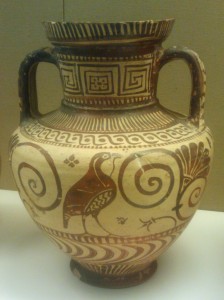by Sarah Cope
The Little Angel Theatre Company, a tiny puppet theatre based in a former temperance hall, is currently celebrating its fiftieth anniversary. As part of that celebration, the company are re-staging The Last Night of the Witches, their first ever production, last performed in 1961.
The long-stringed marionettes are the ones originally used, although in the spirit of keeping the art form alive, they are operated here by trainee marionettists, who, after just two weeks of being taught what must be a tricky skill, appeared to my inexpert eye to be doing a great job.
The show has a lower age limit of five, although the vast majority of the audience were adults. Children were considerately given the two front rows, although the show itself didn’t give many concessions to the younger audience members. Long stretches of complicated dialogue, a distinct lack of pyrotechnics, no audience participation and no songs meant that there was a certain amount of fidgeting apparent.
My own daughter (who I should here admit isn’t five for another four months) kept whispering that she didn’t like it, and wanted to go home. (Later she said she had enjoyed it and wanted to go to “witch university”, such is the fickle nature of the child in question…).
The titular witches were quite alarming-looking; I particularly liked the way they flew sans broomsticks with their bottoms sticking up in the air. Generally though the pace of the show was slow, and though charming laughs were sparse.
Perhaps we shouldn’t expect all children’s shows to be action-packed adventures, and teaching younger audiences to enjoy a more subtle show is no bad thing. However, having your child whisper to you that she wants to go home for 40 minutes isn’t anyone’s idea of fun!
A charming children’s show for whimsical adults, then, or for children with considerably longer attention spans than my own offspring.
For details of forthcoming shows at The Little Angel Theatre, see here.
